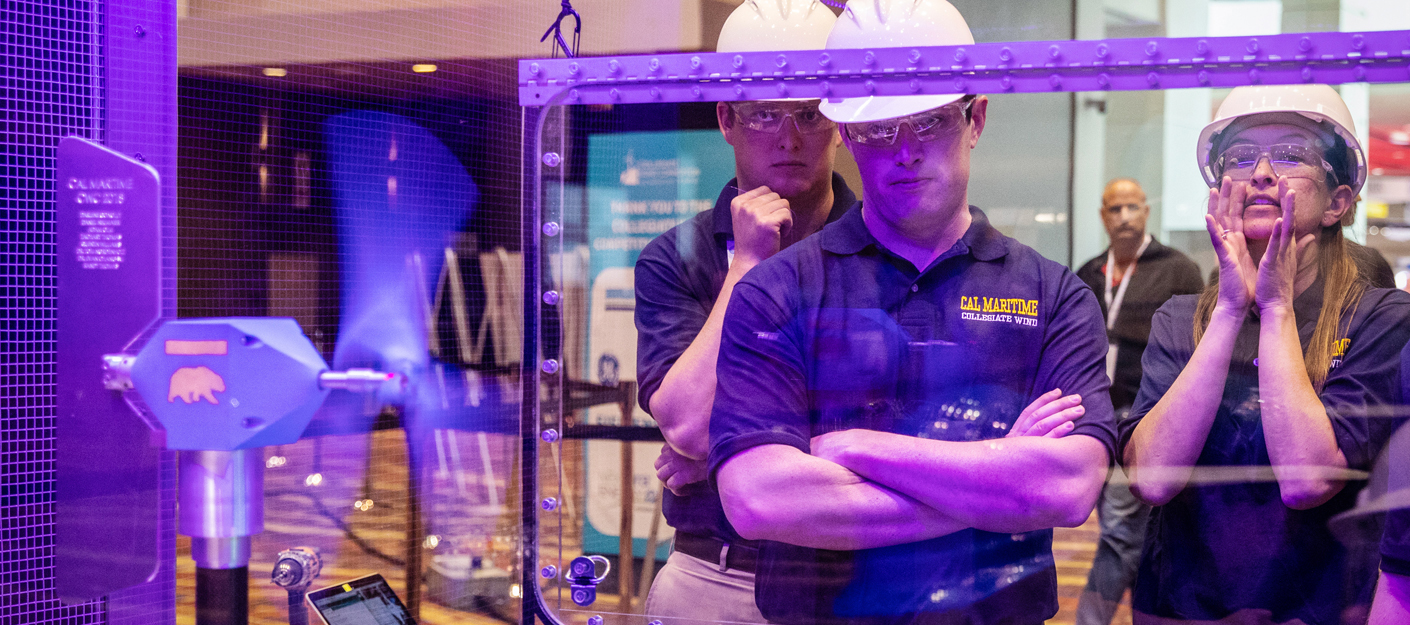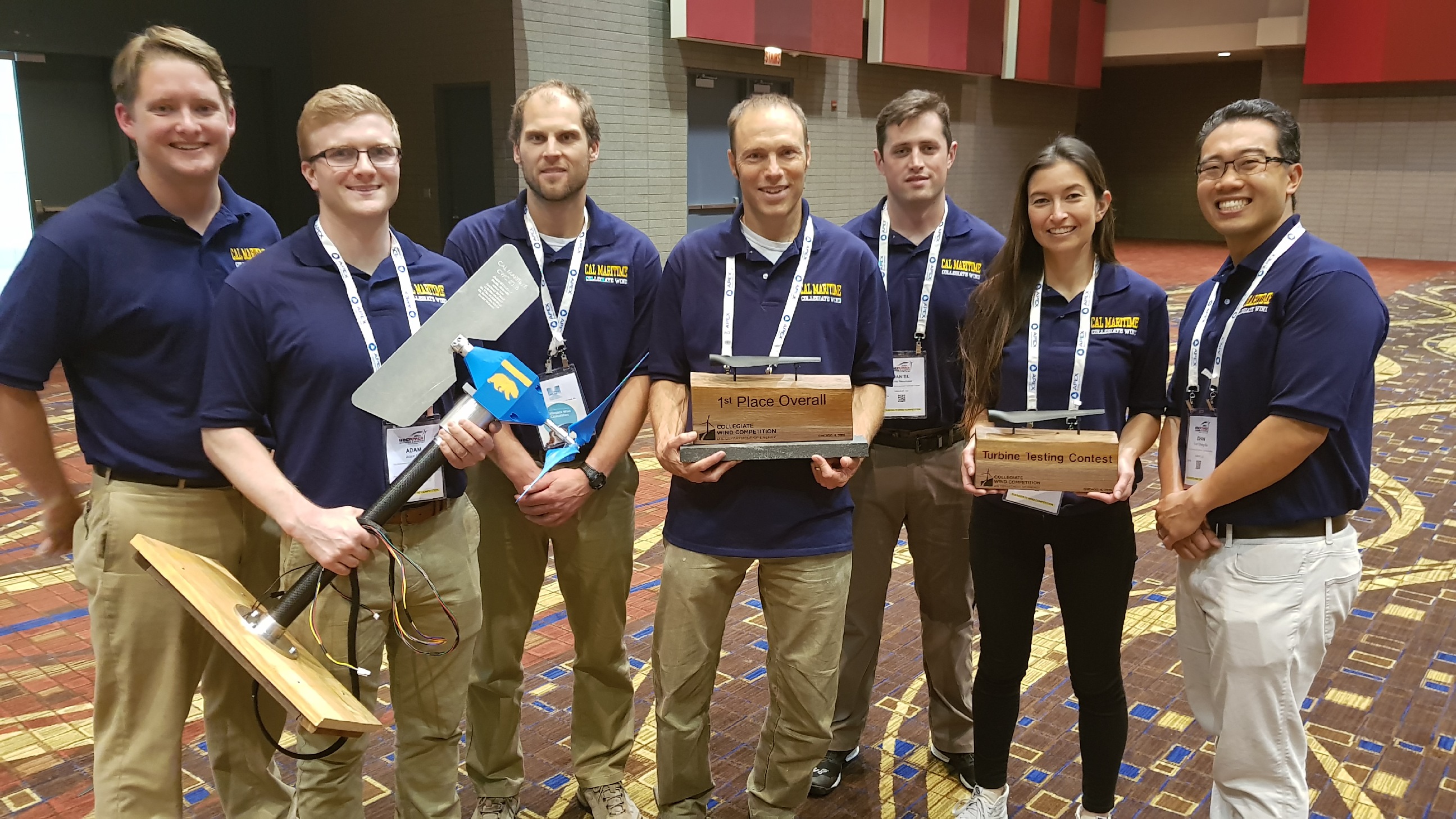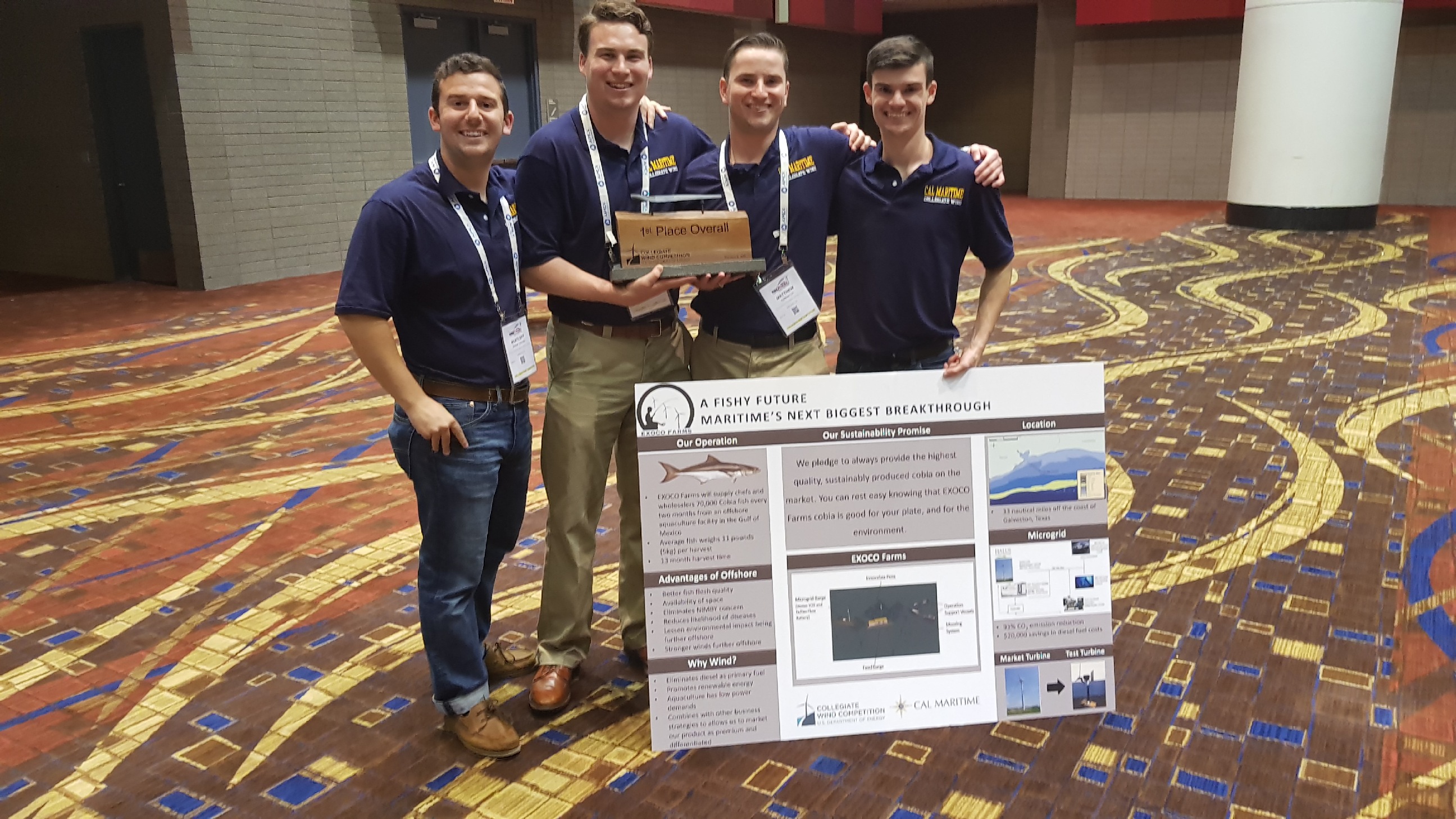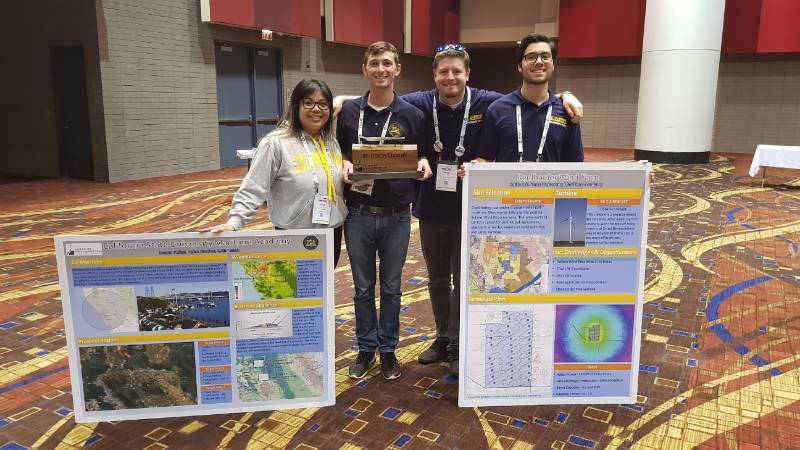|
|
(Vallejo, California – May 11, 2018) – An interdisciplinary team from Cal Maritime
is the overall winner at the 2018 U.S. Department of Energy's Collegiate Wind Competition.
The group also took home the top prize for turbine testing.
A panel of wind industry experts named Cal Maritime the overall winner of the competition
with the highest cumulative scores in all categories. The team's turbine will be displayed
at DOE headquarters in Washington, D.C., in the coming months.
The competition was held at American Wind Energy Association WINDPOWER in Chicago,
Illinois, May 8–10. Competing teams from 12 universities designed and built a model
wind turbine based on market research and siting considerations, developed a business
plan to market the products, and tested the turbines against a set of rigorous performance
criteria.
"The students participating in the Collegiate Wind Competition represent the best
and brightest that our nation has to offer," said Tim Unruh, Deputy Assistant Secretary
for Renewable Power at DOE. "As the U.S. wind industry continues to grow, the Collegiate
Wind Competition provides unique, hands-on training and an opportunity to help launch
the careers of the next generation of wind energy professionals."
The U.S. Department of Energy (DOE) Collegiate Wind Competition is a program created
to provide undergraduates with real-world skills needed to enter tomorrow's renewable
energy workforce. Competitors were challenged with a number of tasks, including developing
and delivering a business plan, siting a wind plant, and building and testing a wind
turbine.
The team representing Cal Maritime consisted of Quentin Williams, Darlene Conolly;
Daniel Neumaier, Adam Olm, and Zachary Thomas of the engineering team; Dylan Sanchez,
Lydia Thanh, and Joseph Phillips of the siting team; Jonah Grier, Stefano Maffei,
Matthew Leli, and Bartlett Tamarro of the business team. Dr. Thomas Nordenholz from
Mechanical Engineering, Dr. Tony Lewis from International Business and Logistics,
Dr. Ryan Dudley Wade from Global Studies and Maritime Affairs, Dr. Evan Chang-Siu
from Engineering Technology, and Ryan Storz from Facilities Engineering Technology
served as faculty representatives, managing and advising the teams.
"Every year that Cal Maritime has participated, we've gotten better at this competition.
Progressively through all of these years, our students have looked back on past designs
and thought processes," said Storz. "This year is an exemplary example of what shipmates
are: we had mechanical engineers, a licensed mechanical engineer, a marine engineering
technology student, three global studies and maritime affairs students, and four business
students on this team. At every event where engineering, siting, or business had a
presentation, challenge, or trial – the entire Cal Maritime team showed up to support
the other members. The constant through all of these years has been Dr. Tom Nordenholz
who has advised each of the previous teams as well as this one."
Other teams in this year's competition were from Virginia Tech, Texas Tech, Penn State,
Chico State, Iowa State, University of Wisconsin, Seattle University, Kansas State,
Northern Arizona, James Madison, and Universidad del Turabo.
According to a U.S. Department of Energy report, wind generation could double by 2020
– and double again by 2030. As the U.S. power generation mix incorporates more wind
energy, qualified workers will be needed to fill related jobs at all levels.
Contact
ABOUT CAL MARITIME
Established in 1929, California State University Maritime Academy is the only degree-granting
maritime academy on the West Coast. Located in Vallejo, California, the campus offers
undergraduate degrees that prepare students for careers in engineering, transportation,
international relations, business, and global logistics. Cal Maritime also offers
a master’s degree in Transportation and Engineering Management, as well as a number
of extended learning programs and courses.




